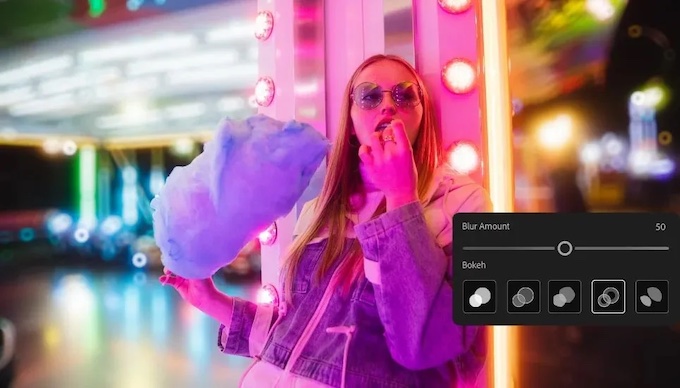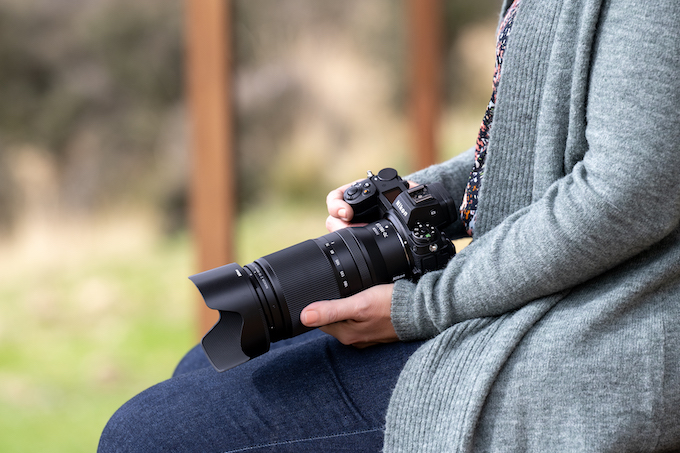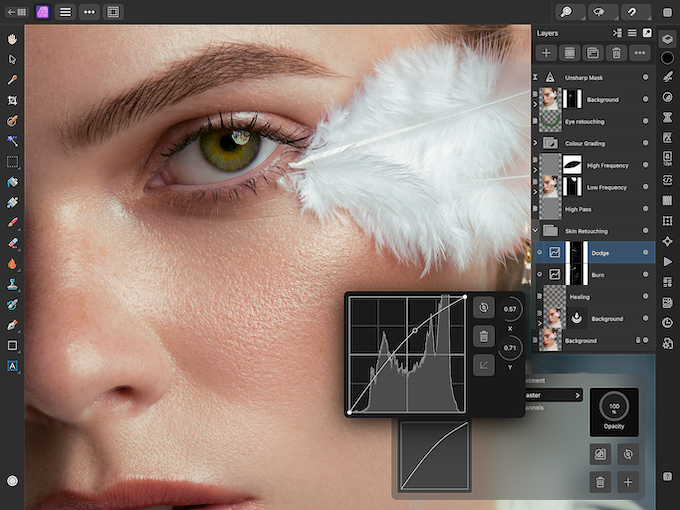Software
With the improved ability of sensors to capture high ISO images along with auto-ISO settings, photographers more and more are moving away from electronic flash lighting for their portrait and wedding assignments, and relying more on available light or LED lighting. Given its many advantages— less equipment to haul and set up, less need for assistants, more candid results, etc.—available or LED lighting has one main disadvantage. As ISO numbers increase, so does capture noise. Enter ON1 NoNoise AI.
[Read: ON1’s NoNoise AI Updates: An Image Noise Removal Game-Changer]
Used as a stand-alone or plug-in, ON1 NoNoise uses machine learning AI to eliminate luminance and color noise while preserving image detail to the highest level. Sharpening controls are available to extract the maximum quality from a raw image. I recently tested the initial release of the $69.99 ON1 NoNoise AI software as a stand-alone and plug-in and achieved impressive results.
What’s New: Automatic Noise Reduction and Detail Enhancement
The ability to differentiate noise from fine image detail improves the closer the noise reduction process occurs to the original image data. ON1 NoNoise performs noise reduction and detail enhancement automatically during the demosaicing process during which sensor “0s” and “1s” become a color image. Other software performs noise reduction later in the processing chain, allowing image noise to propagate further up the imaging process.
The capabilities of NoNoise extend beyond automatic noise reduction and detail enhancement however. While no sharpening is automatically applied, there is a manual sharpening and detail adjustment (with threshold) available. This sharpening step (sometimes called “pre-sharpening”) is often recommended by imaging experts for application early in the raw image processing, but rarely available in software.
[Read: ON1 Photo Raw 2021.5: New and Improved Features]
NoNoise also provides a crop tool and a sophisticated masking ability borrowed from ON1 Photo RAW. This allows you to tailor your noise reduction and sharpening to specific areas of your image. You can add layers with masks to fine tune any part of the image. And if you make an error, the History panel allows you to return to any previous point in your process.
User Friendliness of ON1 NoNoise AI
Opening an image in NoNoise is possible by dragging and dropping or browsing to it in the stand-alone version, or opening it through a plug-in. During installation NoNoise adds a plug-in to any copies of Adobe Photoshop, Lightroom Classic, Capture One, Affinity Photo, Corel Paint Shop Pro, or Apple Photos on your computer. The manual provides instructions for accessing NoNoise through ON1 Photo RAW. I found that it was best for me to simply navigate to the raw file using the stand-alone.

NoNoise is both quick and user friendly. The image initially opens at 100 percent with a split screen displaying the original on the left and the automatically corrected version on the right. The interface retains the look of ON1 Photo RAW, to which it will likely become a part in the future, so Photo RAW users will feel immediately at home. New users of ON1 software will have no problem either. The noise reduction and detail enhancement are performed automatically by NoNoise. Sliders in the right panel allow you to manually adjust the automatic luminance and color noise reduction and detail enhancement, and also to add and adjust sharpening.

Accessing the crop and masking tools in the left panel required me to read through the user manual. After completing your adjustment in the right panel, you click the blue “Apply” icon that bakes them into the bottom layer and allows access to the left panel tools. Pop-up tool tips with access to learning tools are immediately available for new users.
However, if you don’t need anything but the automatic or manual adjustments in the right panel, you can export the result as a DNG for further raw processing, or as a TIFF, JPEG, PNG, or PSD. Output options are plentiful and you can create your own presets for future use.
What Works Well in ON1 NoNoise AI

The automatic noise reductions and detail enhancement are excellent if you are looking for noise-free results from portraits or weddings. With landscapes and other images, I prefer a little bit of “grain” in the image, so I back off the luminance noise correction somewhat. Easily done in NoNoise. Color noise reduction is always set to 100 percent in the automatic correction and I found no reason to change that. I kept trying to improve on the automatic detail enhancement, but never felt I was successful.
The manual sharpening slider also yielded excellent results without creating haloing or other artifacts or increasing noise. The sharpening detail slider will produce artifacts when pushed too far. I could control these by lowering the setting or adjusting the threshold slider.
The masking tools in NoNoise are the same as those in Photo RAW. These include a masking brush, masking bug, quick mask, a refine tool, a chisel tool and the ability to blur the mask. These make it reasonably easy to apply different levels of noise reduction and sharpening to various areas of the image. All the layers you create are flattened on export.
NoNoise also allows batch processing. The process is well thought out, allowing you to process one file and have the setting applied to all others, or allowing you to process each file individually.
Features That Don’t Work as Well
In this initial release NoNoise is only optimized to process raw format files. ON1 says these files are available from over 700 cameras including Fujifilm. I had no issues at all denoising raw files from Canon, Fujifilm, Leica, Nikon, and Sony cameras. ON1 promises that future versions of NoNoise will also be optimized for PNG, TIFF, and JPEG formats. These files will open in this version, but the noise reduction and sharpening results are poor.
Large raw files take a few seconds to open, even on a fast computer, while NoNoise performs its automatic processing steps. I never found this much of an issue with a single file, but batch processing a number of files can take some time.
How It Compares With Other Programs
I opened the same raw file in DxO PureRAW, ON1 NoNoise, Topaz DeNoise AI, Lightroom, Camera Raw, and Nik DFine 2. Noise reduction per se was adequate in all of them, but to my eye ON1 NoNoise produced the best overall image quality in the result, equal to that of PureRAW. This was particularly noticeable in its ability to retain texture in both the highlights and the shadows in raw images with a wide dynamic range exposed at ISO 6400 and above. It lacks the convenience of Lightroom and Camera Raw, and even DFine2 in Photoshop, but the resulting files with NoNoise are visually superior. While my previous go-to’s for noise reduction were DxO PureRAW and Topaz DeNoise, I found ON1 NoNoise produced better results than Topaz and was equal to DxO PureRAW.
If you find yourself shooting portraits or weddings in low light with high ISO settings, give ON1 NoNoise AI a chance. A 14-day free trial is available at on1.com
Stan Sholik is a photographer and tech writer based out of San Clemente, California.





